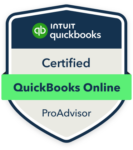Bookkeeping is the process of recording and organizing a business’s financial transactions. It’s the backbone of any successful business, ensuring that every dollar coming in and going out is accounted for. Imagine trying to run a business without knowing where your money is going; it would be nearly impossible! In fact, according to the Small Business Administration, 82% of businesses fail due to cash flow problems.
So, why is bookkeeping so crucial? Accurate financial tracking helps small business owners make informed decisions, stay compliant with tax regulations, and maintain financial health. Good bookkeeping practices lead to better decision-making, allowing businesses to plan for growth and avoid costly mistakes.
In this guide, you’ll learn the essential aspects of bookkeeping, from setting up your system to managing day-to-day finances. Whether you’re a complete beginner or just looking to sharpen your skills, this guide offers research-backed insights to help you succeed.
Read on to discover how proper bookkeeping can set your business up for long-term success.
Setting Up Your Bookkeeping System – Bookkeeping 101 Explained

Are you ready to take control of your finances?
Setting up your bookkeeping system is a crucial first step for any small business. Deciding between manual and automated bookkeeping is key. While manual bookkeeping may seem straightforward, it can be time-consuming and prone to errors. Automated systems, like QuickBooks or Xero, offer efficiency, accuracy, and ease of use, making them ideal for managing your finances.
Next, it’s important to establish a Chart of Accounts. This is essentially the backbone of your bookkeeping system, categorizing accounts into assets, liabilities, equity, income, and expenses. Properly categorizing these accounts ensures that you have a clear picture of your financial health and can make informed decisions.
Another vital step is opening a separate business bank account. Keeping your personal and business finances separate not only simplifies your bookkeeping but also protects you legally and helps in maintaining accurate financial records. By separating your accounts, you’ll find it easier to track income, manage expenses, and prepare for tax season, ultimately ensuring your business runs smoothly.
Basic Bookkeeping 101 Tasks
In this section, you’ll learn about the essential bookkeeping tasks every small business owner should know. We’ll cover how to record financial transactions accurately, track income and expenses effectively, and reconcile bank statements to ensure your records match your bank’s.
These foundational practices are crucial for maintaining accurate financial records and making informed business decisions.
1. Recording Financial Transactions
Have you ever wondered how to keep track of all the money coming in and going out of your business? Recording financial transactions is the answer. These transactions include sales, purchases, payments, and receipts. Each transaction needs to be recorded accurately to ensure your financial records are complete and reliable.
For example, when a sale is made, you should immediately record the details, including the amount, date, and payment method. This practice helps in avoiding errors and keeps your business finances organized.
2. Tracking Income & Expenses
Do you know where every penny of your business is going? Tracking income and expenses is crucial for understanding your financial health. It’s not just about recording transactions; it’s about knowing exactly how much money is coming in and going out. Tools like spreadsheets, apps, or bookkeeping software can help you keep track.
By consistently tracking your income and expenses, you can identify areas where you might be overspending or where you could save money, which is essential for maintaining profitability.
3. Reconciling Bank Statements
Ever felt confused when your bank statement doesn’t match your records? This is where bank reconciliation comes into play. Reconciling bank statements means comparing your records with the bank’s to ensure everything matches. Here’s a simple step-by-step guide:
- Gather Your Records: Collect your bank statements and your business’s transaction records.
- Match Transactions: Compare the transactions in your records to those on the bank statement.
- Identify Discrepancies: Look for any mismatches, such as a payment that hasn’t cleared yet.
- Correct Errors: If you find any errors, adjust your records or contact the bank for clarification.
- Confirm Balances: Ensure that the balance on your bank statement matches the balance in your records.
Managing Accounts Payable & Receivable

In this section, we’ll explore the basics of managing accounts payable and receivable—two essential aspects of bookkeeping that ensure your business runs smoothly.
We’ll cover what they are, how they impact your finances, and the best practices for managing them efficiently, including setting payment terms and ensuring timely payments. Understanding these elements is crucial for maintaining a healthy cash flow and avoiding financial pitfalls.
Understanding Accounts Payable
Accounts payable represents the money your business owes to suppliers or vendors for goods and services received but not yet paid for. It’s crucial to manage these obligations effectively to maintain good relationships with your suppliers and keep your business in good standing.
How to Manage Bills & Payments?
Managing accounts payable involves tracking all your bills and ensuring timely payments to avoid late fees and maintain vendor trust. Here’s a simple guide:
- Organize Invoices: Keep all your bills in one place, whether digitally or physically, so you can easily access them when needed.
- Set Reminders: Use software or calendar alerts to remind you of upcoming payment due dates.
- Prioritize Payments: Pay bills that are essential to your operations first, such as rent, utilities, and key suppliers.
- Schedule Payments: Consider scheduling payments in batches to save time and avoid missing deadlines.
- Negotiate Terms: If cash flow is tight, don’t hesitate to negotiate extended payment terms with your vendors.
Understanding Accounts Receivable
Accounts receivable refers to the money owed to your business by customers for products or services delivered but not yet paid for. Managing this effectively is crucial as it directly affects your business’s profitability and cash flow.
For example, consider a small bakery that supplies cakes to local cafes. If the cafes delay payments, the bakery might struggle to buy ingredients, pay staff, or cover rent, affecting its overall operations and profits.
Tips for Managing Invoices and Collecting Payments:
- Send Invoices Promptly: Ensure you send invoices immediately after the service is provided or goods are delivered.
- Use Clear Payment Terms: Clearly state when payments are due, any penalties for late payments, and preferred payment methods.
- Offer Multiple Payment Options: Make it easy for clients to pay by offering various payment methods (e.g., credit cards, bank transfers).
- Automate Reminders: Use virtual accounting or bookkeeping software to automate payment reminders before and after the due date.
- Follow-up: If a payment is late, follow up with a friendly reminder or phone call to ensure it’s on the client’s radar.
Best Practices for Managing Payables and Receivables
Establishing clear payment terms is vital for managing both payables and receivables effectively. Research shows that most businesses set payment terms of 30 days (Net 30), but depending on your industry and cash flow needs, you might consider Net 15 or even Net 60. Be clear about these terms from the outset to avoid confusion later.
Strategies for Ensuring Timely Payments:
- Early Payment Discounts: Offer discounts for early payments to incentivize customers. For example, a 2% discount if the invoice is paid within 10 days can motivate clients to pay promptly.
- Late Payment Penalties: Introduce penalties for late payments to encourage timely payment. Be sure to communicate these penalties upfront.
- Use of Technology: Leverage tools like QuickBooks or Xero to streamline invoicing and payment tracking, making the process more efficient and reducing the likelihood of late payments.
- Build Strong Relationships: Foster good relationships with your clients and suppliers. Businesses like Apple and Amazon have strong relationships with their suppliers and clients, allowing them to negotiate better terms and ensure prompt payments.
Financial Reporting & Analysis
When managing your small business, understanding financial reporting and analysis is crucial. Have you ever wondered how successful businesses keep track of their finances and make informed decisions? In this section, we’ll dive into creating financial statements, understanding key metrics, and interpreting financial data. By mastering these aspects, you can make better decisions and steer your business toward success.
Creating Financial Statements
Introduction to Key Financial Statements:
Financial statements are the backbone of business accounting. They include:
- Income Statement: Shows your business’s revenue, expenses, and profit over a specific period.
- Balance Sheet: A snapshot of your business’s financial position, including assets, liabilities, and equity.
- Cash Flow Statement: Tracks the flow of cash in and out of your business.
| Financial Statement | Purpose | Key Components |
| Income Statement | Measures profitability over time | Revenue, Expenses, Net Income |
| Balance Sheet | Shows financial position at a point in time | Assets, Liabilities, Equity |
| Cash Flow Statement | Monitors cash inflows and outflows | Operating, Investing, Financing Activities |
How to Prepare and Analyze Financial Statements:
Preparing these statements involves recording all transactions, categorizing them correctly, and summarizing them in reports. To analyze them:
- Review Income Statement: Check if revenue is growing and compare it to expenses to assess profitability.
- Examine the Balance Sheet: Ensure assets are greater than liabilities to maintain a healthy financial position.
- Analyze Cash Flow Statement: Make sure the business generates positive cash flow to cover expenses.
Understanding Key Financial Metrics
Key financial metrics help gauge your business’s health:
- Profit Margins: The percentage of revenue left after expenses. A 20% profit margin means 20 cents of every dollar earned is profit.
- Liquidity Ratios: Measures the ability to pay short-term obligations. A current ratio of 2:1 means you have $2 in assets for every $1 of liability.
Metrics guide decisions. For instance, low-profit margins might suggest cutting costs, while low liquidity ratios may indicate a need to improve cash flow management.
Interpreting Financial Data
Understanding financial statements is like reading a roadmap for your business:
- Income Statement: Look at revenue trends and expense patterns. Are your profits increasing? Where are you spending the most?
- Balance Sheet: Assess your assets vs. liabilities. A strong balance sheet has more assets than liabilities, showing financial stability.
- Cash Flow Statement: Check the sources and uses of cash. Positive cash flow from operations is crucial for business health.
Common Financial Red Flags to Watch Out For:
Certain signs in your financial statements can indicate trouble:
- Declining Revenue: If sales are dropping, it’s time to investigate why.
- Rising Expenses: If costs are increasing faster than revenue, you might need to cut back.
- Negative Cash Flow: Continually spending more than you earn can lead to insolvency.
Tax Preparation & Compliance
When managing a small business, understanding and complying with tax requirements is crucial. Are you aware of the different taxes your business needs to pay? Proper tax preparation can save you from penalties and help optimize your finances. Let’s explore the essentials of business taxes, record-keeping, and when to seek professional help.
Understanding Business Taxes
Small businesses face various tax obligations, including:
- Income Tax: Based on your business’s profits.
- Sales Tax: Applied to goods and services sold.
- Payroll Tax: Withheld from employees’ wages and paid by the employer.
For example, small businesses in the U.S. must pay federal income tax, typically ranging from 10% to 37%, depending on the income bracket. Bookkeeping plays a vital role in tax preparation by keeping accurate records of all financial transactions, ensuring that the correct taxes are paid, and identifying potential deductions.
Maintaining Tax Records
Accurate tax records are essential for compliance and minimizing tax liabilities. Here are some tips for organizing and storing tax documents:
- Categorize Documents: Group receipts, invoices, and financial statements by category (e.g., income, expenses, payroll).
- Use Digital Tools: Consider using software like QuickBooks to store and organize digital copies of your tax records.
- Set Up a Filing System: Use labeled folders or binders to organize physical documents by year and category.
- Back-Up Regularly: Ensure digital records are backed up on cloud storage or an external hard drive.
Working with a Tax Professional
While bookkeeping helps with day-to-day financial management, there may come a time when hiring a tax professional is necessary, especially as your business grows. A tax professional can help navigate complex tax laws, identify deductions, and ensure compliance.
When to Hire a Tax Professional:
- Complex Tax Situations: When your business expands, adding employees or new revenue streams.
- Time Constraints: Managing taxes takes too much time away from running your business.
- Tax Planning: For strategies to minimize your tax liability legally.
How a Bookkeeper and Tax Professional Can Work Together?
A bookkeeper maintains your financial records throughout the year, ensuring accuracy and organization. When tax season arrives, a tax professional can use these records to prepare and file your taxes efficiently. This collaboration saves time and reduces the risk of errors or missed opportunities for deductions.
Bookkeeping 101 | Best Practices
Are you consistently reviewing your books and ensuring your financial data is secure? Regularly reviewing your financial records is crucial for the success of any business. Let’s dive into some best practices that can help you streamline your bookkeeping process.
Regularly Review Your Books
Regular financial reviews are essential for catching errors early and ensuring your business remains financially healthy. For instance, reviewing your books weekly or monthly can help you spot discrepancies, like missed payments or unrecorded expenses, that could negatively impact your business. Consider setting up a schedule, such as every Friday afternoon, to review and update your books.
Backup Your Financial Data
Securing your financial data is critical to avoid losing important records. Here are five methods to back up your data:
- Cloud Storage: Services like Google Drive or Dropbox offer secure, automatic backups.
- External Hard Drives: Regularly save copies of your data to an external hard drive.
- USB Drives: Use encrypted USB drives for portable backups.
- Network Attached Storage (NAS): For larger businesses, NAS devices provide centralized data storage.
- Paper Copies: Keep printed records of essential documents in a secure location.
Continuously Improve Your Bookkeeping Process
Improving your bookkeeping process can save you time and reduce errors. Consider these tips:
- Use Accounting Software: Tools like QuickBooks automate many bookkeeping tasks.
- Automate Invoices and Payments: Set up recurring invoices and payments to reduce manual work.
- Outsource Bookkeeping: If bookkeeping is overwhelming, consider outsourcing to a professional.
- Regular Training: Keep yourself updated with the latest bookkeeping practices.
- Monitor KPIs: Regularly check key performance indicators to gauge financial health.
Common Bookkeeping Mistakes to Avoid
Are you keeping track of every small expense in your business? Overlooking these can quickly add up and impact your bottom line. Here’s a look at some common bookkeeping mistakes and how to avoid them.
1. Failing to Track Small Expenses
Small expenses might seem insignificant, but they can accumulate and affect your profits. For instance, missing out on just $10 daily adds up to over $3,600 annually, which can substantially impact your business’s bottom line.
2. Mixing Personal & Business Finances
Blending personal and business finances can lead to inaccurate records and tax issues. Experts suggest maintaining separate bank accounts and credit cards for business expenses to ensure clarity and avoid legal complications.
3. Not Reconciling Accounts Regularly
Irregular reconciliations can lead to overlooked errors and financial discrepancies. Regularly reconciling your accounts ensures accuracy and keeps your finances in check, preventing potential issues down the line.
When to Hire a Professional Bookkeeper?
Are you spending too much time on bookkeeping instead of growing your business? It might be time to consider hiring a professional bookkeeper. Here’s what you need to know.
- Signs You Need Professional Help: If managing your finances is overwhelming, or you’re making frequent errors, it’s time to hire a bookkeeper. A professional can save you time, reduce mistakes, and ensure accuracy in your financial records.
- How to Choose the Right Bookkeeper: Look for qualifications, experience, and reviews. A good bookkeeper should be certified, trustworthy, and well-versed in your industry.
- Working with a Bookkeeper: Collaborate by setting clear expectations and maintaining open communication. This partnership will help you stay organized and focused on your business goals.
Conclusion
Effective bookkeeping is crucial for any small business’s success. By staying on top of your finances, you ensure informed decision-making, better cash flow management, and tax compliance. Regular financial reviews and continuous learning are essential for maintaining accurate records and improving your financial processes. Now is the time to take control of your bookkeeping.
If you need help, LUCI Financial Solutions is here to provide expert services, ensuring your business’s financial health is in the best hands. Don’t hesitate to reach out and get started!










